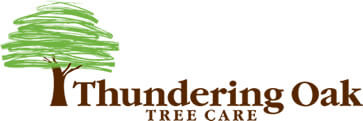Frequently Asked Questions About Tree Care
Are you looking for answers to your tree care questions? Our certified arborist has answers! Certified arborists have expertise in tree species, tree biology, and other factors that enable them to assess tree-related situations and accurately recommend appropriate courses of action.
Q: A Tree Threatens My House During High Winds. Can You Cut Some Off The Top To Make It Safer?
A: Tree topping is a common practice but is very dangerous to trees. This harmful practice will make a healthy tree more hazardous over time. Topping cuts away the “food factory,” or leaf-bearing crown, of the tree. It triggers the tree’s natural survival mechanism, forcing rapid growth of multiple shoots below each cut to grow a new crop of leaves soon as possible. If the tree does not have stored energy reserves to survive this threat, it will be seriously weakened and may die. Learn more about tree topping.
Contact us to talk with a certified arborist if you have safety concerns about trees on or near your property in Pierce or South King County, Washington.
Q: What Do They Mean By “Sunburn” For A Tree?
A: Topping can do to a tree what we all dread at the beach. The thousands of leaves in a tree’s crown are there to absorb sunlight. Cutting out the leaves as the top is removed suddenly exposes the remaining branches and trunk to the harsh levels of light and heat produced by direct sun. This can sunburn the delicate tissues beneath the bark, leading to bark splitting, cankers, and the death of some affected branches. Learn more about tree topping and sunburn. Learn more about tree topping and sunburn.
Q: Does Tree Topping Create Other Hazards?
A: Yes, tree topping does create other hazards. Few trees can combat the multiple severe wounds caused by topping. Decay organisms have a free and straightforward path to move into the tree and down the branches. Stubs left from tree topping usually decay, and the shoots produced below the cuts are weakly attached to the tree. The new shoots grow large quickly and are likely to break, especially in windy weather. Thus, the attempt to reduce the tree’s height to make it safer has the opposite result, making it more hazardous than before.
Contact us to talk with a certified arborist if you have safety concerns about trees on or near your property in Pierce or South King County, Washington.
Q: Is Tree Topping The Least Expensive Way To Reduce A Tree?
A: No. The actual cost of tree topping is not just the initial fee paid to the perpetrator. If the topped tree survives, the topped tree will need to be trimmed again within a few years. If left untrimmed, the new branches may fall victim to storm damage and the resulting cleanup. If the tree dies, it will have to be removed. Because tree topping is an unacceptable pruning practice, any damage caused by branch failure in a topped tree may lead to a finding of owner negligence in a court of law. Tree topping is a high-maintenance pruning practice to avoid.
Q: What Other Costs Are Associated With Topping Trees?
A: A frequently overlooked cost of tree topping is the effect on the property value. Healthy, well-maintained trees can add 10% to 20% to the value of a property. Trees disfigured by topping are considered a pending expense and can reduce the property value.
Do you have other tree-related questions or concerns about specific trees in South King County or Pierce County?
Contact us today to talk with a certified arborist for tree care facts from a specialist in tree care for our beautiful Puget Sound trees and shrubs.
Healthy, well-maintained trees can add 10% to 20% to the value of a property.
